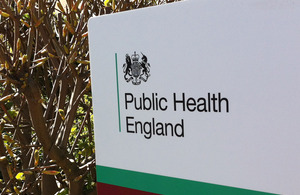PHE publish investigative report on increasing crack use
Public Health England and the Home Office have published an investigative report on the rise in crack cocaine use in 6 areas of England.

Public Health England (PHE) and the Home Office have today, Monday 25 March 2019, published a summary of findings from the Increase in crack cocaine use inquiry, an investigative report on crack cocaine use in 6 areas of England.
This publication follows evidence reported in the 2018 Serious Violence Strategy, that drugs have been an important driver of the increase in serious violence in England and Wales since 2014.
Key findings from the ‘Increase in crack cocaine use inquiry’ include:
- the majority of people using crack were observed to be existing heroin users, often with co-occurring mental health problems and at risk of being homeless
- the rise in crack use is likely to be caused by increased availability (linked to a surge in global production of cocaine), affordability and aggressive ‘marketing’ by dealers
- changes in attitudes and stigma associated with crack use, and a reduced focus by police on drug dealing
- clear evidence of ‘county lines’ operations - but this varied across different areas
The latest comprehensive prevalence estimates by Liverpool University - published today alongside this report - show that while there was a sharp rise in crack use between 2011 to 2012 and 2014 to 2015, it has now levelled, but remains much higher than previously.
However, figures for overall use of crack as well as heroin between 2014 and 2015 and 2016 and 2017 have increased by 4.4%.
Rosanna O’Connor, Director for Drugs, Alcohol, Tobacco and Justice at PHE said:
This report will come as no surprise to those working on the frontline, who will have seen first-hand this surge in crack use in their communities.
Local areas, more than ever, need to continue to invest in effective drug services if we are to stop the creep of this highly addictive drug into the wider community and people’s lives being torn apart.
Treatment is cost-effective with every £1 spent yielding a £2.50 saving on the social costs, including reducing crime. Services need to reach out to crack users and offer more attractive and tailored support to meet their specific needs.
And more needs to be done to improve the links from the criminal justice system into treatment services, for example through greater availability of arrest referral schemes and improved monitoring of drug rehabilitation requirements.
Victoria Atkins, Minister for Crime, Safeguarding and Vulnerability said:
The government is committed to tackling the illicit drugs trade, protecting the most vulnerable and helping those with drug dependency to recover.
The Home Secretary also recently appointed Professor Dame Carol Black to carry out a major review of drug misuse, including the workings of the illicit market.
The data and this inquiry indicate that the upward trend began to develop several years ago around 2013.
This investigation has identified several factors which may have influenced the rise in crack use, including:
- a surge in global production of cocaine since 2013
- increased availability and affordability of crack
- aggressive “marketing” of the drug by dealers
Organised crime groups are using sophisticated techniques to aggressively market crack in large cities, as well as towns and seaside locations. They are largely exploiting existing demand by targeting existing heroin users, but some participants suggested that dealers are also opening up new markets, with a different group of first time younger users.
There was clear evidence of ‘out of town’ dealers from criminal groups based in cities such as London, Liverpool, Manchester and Birmingham infiltrating local markets. However, the impact of these county lines operations varied between areas.
Other reported factors contributing to the increase were changes in the stigma about crack, as well a reduced police focus on targeting drug dealing.
The findings support existing evidence, including information from the National Crime Agency, about the expansion of ‘county lines’ activity in recent years. There was a widespread view among all interviewed that county lines groups were much more likely than local groups to engage in serious violence, and to exploit vulnerable young people and drug users.
The participants were largely unanimous that the increases are primarily among existing heroin users, but there have also been suggestions of a new ‘hidden’ group of crack users who are not using heroin and who have not engaged with treatment services. Research is needed to explore the demographics of this group and what is leading or causing them to use crack.
UK Health Security Agency press office
10 South Colonnade
London
E14 4PU
Background
The ‘Increase in crack cocaine use inquiry’ is based on interviews conducted with 3 groups of people at the frontline of drug use – specialist drug workers, drug users and local police – and reports on their perceptions of recent developments in crack use.
The report focused on 6 areas which had seen the largest increases in people starting treatment for crack cocaine and as such the findings might not be representative of the broader national picture.
The United Nations Office of Drugs and Crime reported that global opium production increased by 65% in 2017.